Putting Asda’s Price Guarantee to the test – in an ex-Netto Asda Supermarket
Judging from the number of hits – currently 900+, and rising – many of you enjoyed my recent illustrated post about Asda’s Old Fold Road store in Gateshead, following its impressive transformation from a Netto.
While the increase in product lines and instore services is one of Asda’s selling points at its converted Netto sites, another is its pledge that “all newly converted Netto stores will charge the same low price as every other Asda in the UK.” This means that smaller Asda Supermarket sites, just like their full-size counterparts, are covered by the much publicised Asda Price Guarantee: the company’s pledge to be “10% cheaper on your comparable grocery shopping” than Tesco, Sainsbury’s, Morrisons or Waitrose.
At the same time as I was checking out the Gateshead store’s new look, Asda challenged me to carry out a £50 shop instore – to put the Price Guarantee to the test, as well as seeing whether it really was possible to do a full weekly shop in a compact Asda. So, how did I get on?
My shopping list
To make the test as real as possible, I prepared a shopping list comprising many of the items that I buy on a regular basis and needed to buy anyway, including fresh fruit and veg, storecupboard items (e.g. olive oil, coffee, baked beans), crisps and nuts, household items (e.g. handwash, toilet rolls), frozen foods, cat food and wine, as well as ingredients for that evening’s dinner (sausage and mash).
A couple of qualifiers
As I’ve mentioned before, I’m not usually an Asda shopper, but in the supermarkets I do visit – mainly Waitrose, Sainsbury’s, Morrisons and Aldi – I tend to go for own-brands over branded products. The ‘comparable grocery shopping’ proviso of the Price Guarantee reflects the fact that while it’s easy to compare the price of branded products in different supermarkets, own-brand comparisons are more tricky due to variations in pack size, ingredients or other characteristics. To ensure that my shop included as many comparable items as possible, I was therefore prepared to buy a few more branded items than would usually be the case.
Finally, it’s worth noting that the shop took place on 6 August; inevitably, all the prices and offers that I mention can only ever be a snapshot of that particular day, and may well have changed – up or down – since. All the photos are from two days later, when I returned to the store – unladen with shopping – for a more detailed look around.
Finding what I wanted… and a few other things
By and large, I was able to find everything on my list, though I did have to make a few substitutions where my chosen brand wasn’t available. For example, I couldn’t find any Pears handwash, so bought a similar Baylis & Harding product (£2) instead. I couldn’t see any Sacla green pesto either, so decided to abandon the pesto rather than opt for the slightly cheap-looking Asda own-brand alternatives.
In some other categories – such as meat sausages, vegetarian sausages, redcurrant jelly and, more surprisingly, potatoes – the options instore were a little bit limited, and you might well choose to go to a larger store if you were after a wider range or particular brands. On the other hand, it’s hard to imagine that the old Netto on the site would have sold vegetarian sausages or redcurrant jelly at all.
Alongside the items I planned to buy, I was also tempted by a few of the offers that grabbed my attention instore. Mr Muscle Window & Glass Cleaner (500 ml) for £1 seemed like a great deal, as did Belvoir Elderflower Pressé (75 cl) at two for £3.50 (compared to £2.20 for one) and Taylors of Harrogate coffee at two for £5 (instead of £3.28 each). The branded wines (Blossom Hill at £5 and Echo Falls at £4) also seemed keenly priced.
Finally, my cat, Sebastian, did well out of the shop too, with the price for Iams (£3 for 1kg) looking very attractive compared to what I normally pay.
In total, my shop comprised 38 different products, and came to £68.77 once the ‘two-for’ discounts were deducted.
Wanting to enter the details of my shop online… but not until tomorrow
Watching the rather cheesy TV ad for the Asda Price Guarantee, you can be forgiven for thinking that all you need to do is arrive home, gather the other mums around, and immediately start comparing each others’ receipts.
The reality is a little less exciting, especially as you have to wait until at least 6am the morning after you shopped before inputting your details at the Asda Price Guarantee website. At the moment, neither the receipt nor the Price Guarantee website homepage flags up that you can’t compare your prices straight away; it’s only mentioned once you reach the ‘Enter your receipt details’ page via the welcome screen’s ‘Enter Receipt’ button.
This, I would have thought, has potential to cause disappointment and annoyance, yet would be easily remedied by changing the receipts to read “Check your receipt online from 6am tomorrow at…” instead of the current “Check your receipt online at…”
Putting the Price Guarantee to the test… and interrogating the data
Needless to say, I waited with baited breath until the following morning when – finally – I could enter and check the details of my shop, a process that is clearly explained and takes just thirty seconds or so to complete. So, was my comparable shop 10% cheaper than it would have been at Asda’s competitors? Yes, it was, as the results screen above happily declared.
Given the prominence of the ‘10% Cheaper’ promise within the Asda Price Guarantee, I found it a little strange that the main results screen showed the difference between my Asda shop and the equivalent elsewhere in terms of actual money saved, rather than percentage. Hence, I could see (above) that my comparable items would have cost £8.87 more at Tesco or £6.62 more at Morrisons, but beyond knowing that the saving must be at least 10%, the precise percentage difference was not made clear.
Another thing that immediately struck me was the fact that I’d apparently saved £7.61 compared to Waitrose, but £8.87 compared to Tesco. Did this mean that Waitrose was cheaper than Tesco for the items I’d bought? Actually, no, it didn’t at all.
For each of the other supermarkets, clicking the ‘View details’ link brought up a more detailed, item-by-item price comparison. Pleasingly, only three of the 38 items I bought turned out not to be comparable with any of the other supermarkets, a much smaller number than I expected.
The store-by-store breakdown showed that while the Price Guarantee had been able to compare 31 of my 38 different items against Tesco, it had managed to compare 29 against Sainsbury’s, 28 against Morrisons, and only 23 against Waitrose. If you’re interested in the full detail, I’ve created a PDF (Table 1) that shows the price comparisons for all the items that I bought.
In other words, the headline saving of £8.87 against Tesco was based on comparable items costing £54.27 at Asda. In contrast, the headline saving of £7.61 against Waitrose was based on a much smaller comparable basket, costing £39.89 at Asda. Hence, while it’s fine to compare the headline figures for any one of the other supermarkets with Asda, it’s not fair to compare those competitors with each other, simply because the basket sizes being compared are all different.
Asda would probably point out, of course, that the whole point of the Price Guarantee is only to compare its own prices with those of competitors, and that it doesn’t claim to compare, say, Tesco against Waitrose or Tesco against Morrisons. That’s fine, but I wonder how many other shoppers would have drawn the same initial Tesco vs Waitrose conclusion as I did from those headline figures?
Certainly, it’s another reason why it would make more sense for the initial results page to show the percentage savings relative to Asda’s competitors, rather than actual cost savings that have potential to confuse. Currently, however, the actual percentage savings against the other supermarkets are not stated anywhere in the results – I had to work them out myself by copying and pasting the data into Excel.
This is surprising, as in my case, at least, the statement that “Your comparable grocery shopping is 10% cheaper than Tesco, Sainsbury’s, Morrisons and Waitrose” actually underplayed the true extent of the saving. In percentage terms, Morrisons came closest to beating the Asda Price Guarantee, where I saved ‘only’ 12.2% by shopping at Asda. Tesco was next best (14% cheaper at Asda) followed by Waitrose (16%) and finally – perhaps surprisingly – Sainsbury’s (16.1%). Again, my PDF shows the detailed data from which I calculated these percentages.
Taking the impulse buys out of my comparison
As I noted above, there were quite a few items in Asda that I bought on impulse because they seemed like really great deals. It turned out, for example, that the £3 bag of Iams was £1.41 cheaper in Asda than its nearest competitor (Sainsbury’s), and a full £2.50 cheaper than Waitrose [see full breakdown]. While great for me, as the customer, including such items in the test inevitably gives Asda a head start in meeting its ‘10% cheaper’ pledge.
So, what happens if I exclude those impulse purchases from the comparison and just test the Price Guarantee on the items on my shopping list? Well, Asda still came out top, but obviously by a bit less than before:
- 5.9% cheaper than Morrisons on my comparable shopping-list items
- 7.8% cheaper than Tesco
- 10.1% cheaper than Sainsbury’s
- 10.3% cheaper than Waitrose.
I’ve prepared a second PDF (Table 2), which makes clear the items that I excluded from each comparison. Again, bear in mind that the percentages above are only really meaningful in terms of comparing Asda to each of its competitors, not the competitors with each other.
Testing the data a third way
Having established that Asda was indeed cheapest across both my entire shop and the shopping-list items, I thought it would be interesting to look at which of the five supermarkets was cheapest on a product-by-product basis. You can see the results of my analysis in a third PDF (Table 3).
For each of the 35 comparable products that I bought, I ranked the five stores 1 to 5, where 1 was the cheapest supermarket and 5 was the most expensive. If two or more stores tied for the cheapest price, then both were ranked 1. If a product was only available at, say, three of the five stores, then I ranked these 1 to 3. So, which supermarket came out best by this measure?
Impressively, Asda ranked #1 for price on nearly two-thirds (23, or 66%) of the 35 comparable items that I bought, and was #2 on all but two others. Only the iceberg lettuce (cheaper at both Tesco and Morrisons) and the McCoy’s crisps (cheaper at Tesco and Sainsbury’s) let the side down.
Of Asda’s competitors, Tesco ranked #1 on 13 (i.e. 42%) of the 31 comparable items that I bought, while Morrisons was close behind with #1 ranks on 11 (39%) of 28 comparable items.
In contrast, Sainsbury’s (#1 on 7 (24%) of 29 comparable items) and Waitrose (#1 on just 4 (17%) of 23 products) performed least well by this criterion.
Conclusions
My test has exposed a few ways in which the Asda Price Guarantee website could potentially be improved, most notably in signposting the overnight wait more clearly, and in limiting scope for misinterpretation by presenting the headline savings against Asda’s competitors in percentage rather than cash terms. Where Asda is significantly more than 10% cheaper, as it was in my case, it also seems odd for this to be underplayed.
These quibbles aside, the Asda Price Guarantee is clearly a worthwhile and quite fun tool that is relatively easy for customers to use, and that helps Asda makes its point about price.
Whichever way you look at it, it’s also hard to dispute that I got a good deal by carrying out my weekly shop at Asda. The Price Guarantee’s ‘10% cheaper’ pledge worked as promised – even in a small-format Asda Supermarket – and the analysis of my particular shopping basket, using my three different methods, seems to demonstrate the keenness of Asda’s prices relative to its competitors. Value is, and always has been, a key componenent of the Asda offer, and the Price Guarantee helps to ensure that Asda’s price credentials are widely understood among shoppers.
Herein, however, lies the problem. If Asda is indeed the cheapest of the big grocers, and shoppers recognise this, why is it continuing to lose market share?
Could it be that in bigging up its Price Guarantee, Asda is actually attacking the wrong target? Look at the latest Kantar Worldpanel data, and the big gainers continue to be Aldi (with annual sales growth of 24.4%), Lidl (up 13.8%) and Waitrose. As Tesco and Asda slip, Aldi, Lidl and Waitrose have each recorded record market shares of 3.6%, 2.6% and 4.3% respectively.
My analysis indicates that Waitrose struggles to compete with Asda on price – but no-one would really expect otherwise. Shoppers love Waitrose for the customer service, the pleasant store environment and the quality products that you simply can’t get anywhere else.
Meanwhile, Aldi and Lidl win no awards for their store interiors, but the shopping experience is quick and efficient, and the stores are thriving as shoppers discover own-brand products that are eyecatchingly cheap yet surprisingly high in quality. A Price Guarantee based on ‘comparable’ items is therefore slightly undermined when shoppers are increasingly buying exclusive and ‘incomparable’ products from Aldi, Lidl and Waitrose.
Price is important, of course – especially in economically challenging times – but so is the quality of the products and the overall shopping experience. Asda, I would argue, needs to focus increasing attention on these last two factors.
Tesco’s reaction to the rise of Aldi and Lidl was to launch its own Discounter range, which worked for a while but came across as desperate, and muddied the chain’s “good, better, best” own-label strategy. Asda, wisely, has avoided such a confused approach, opting instead to highlight the price credentials of its existing ranges through the Price Guarantee.
Crucially, Asda has also started to recognise that the quality of its own mid-tier brands – or, at least, customers’ perceptions of the quality – is one of the areas where it is weakest relative to its competitors, and where Aldi, Lidl and Waitrose all present a threat. Asda’s response has manifested itself in the ‘Chosen by You’ label, launched last year, though extending the brand to too many categories – such as refuse sacks – does risk undermining any potential benefits.
However, even once it’s convinced potential customers of its keen prices or improved quality products, Asda needs to keep getting more of those customers through the doors – possibly a bigger hurdle than you might think.
Chatting to my friends and colleagues about retail, as I have a habit to do, their first reaction to Asda often relates to it being a busy, stressful and unpleasant shopping experience – a point that I’ve previously made myself in relation to the vast Metrocentre store at the opposite end of Gateshead. It’s hard to know how widely-held this view is, but it’s a factor that drives at least some shoppers elsewhere.
If that’s the case, the small-format Asda Supermarket model may have unintended benefits. As I remarked after my visit to the new Gateshead store, there is something rather nice about shopping in an Asda that is attractively laid out and isn’t overwhelmingly large and busy. Could this, as much as the range and convenience, account for the converted Netto stores’ apparent uplift in sales to date?
If it is, it may well be through the growth of the Asda Supermarket format – rather than the traditional sheds, packed with non-food – that Asda succeeds in turning around its shrinking market share.

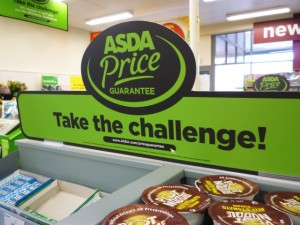
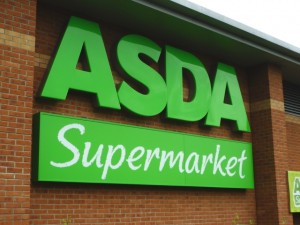
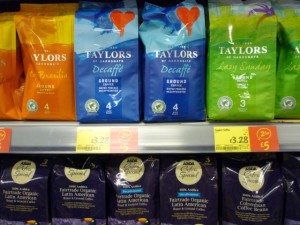
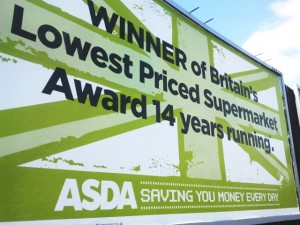
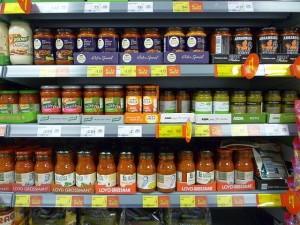
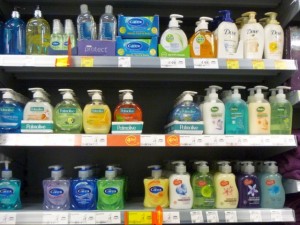
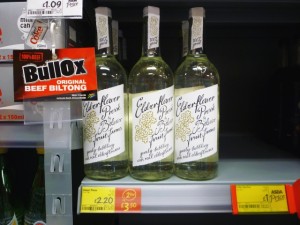
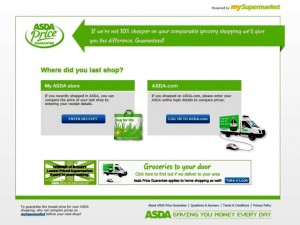
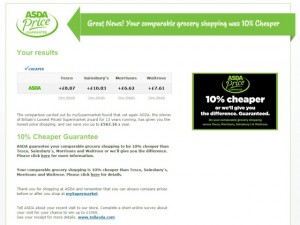
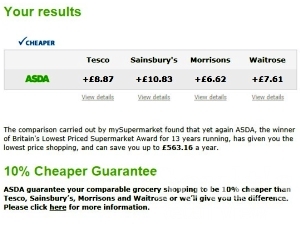
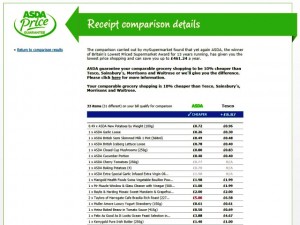
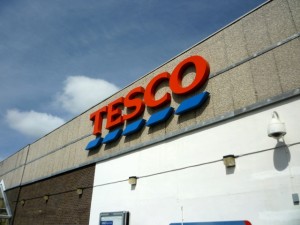
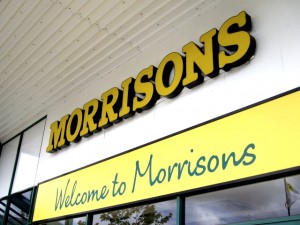
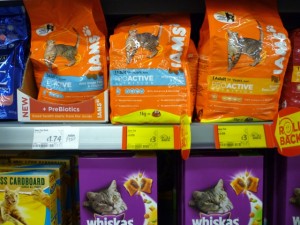
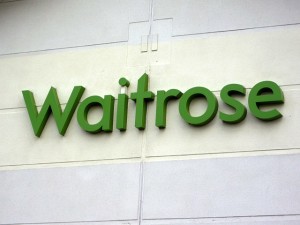
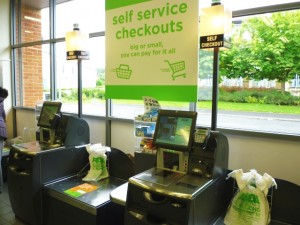
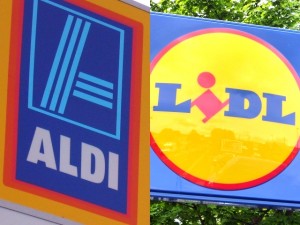
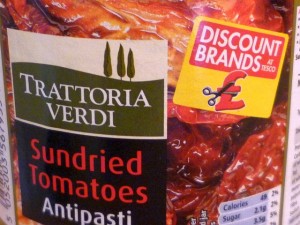




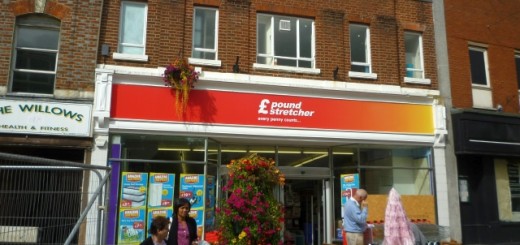



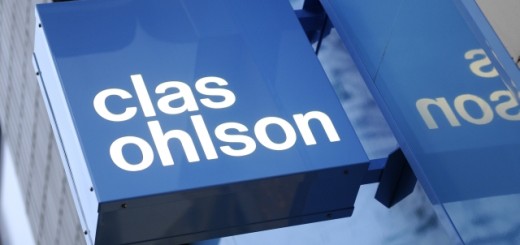
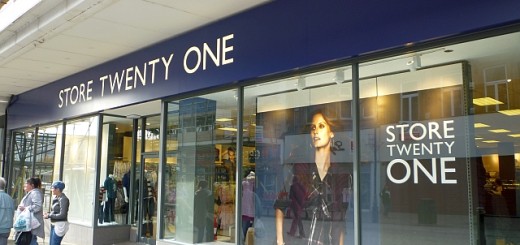
You said – Judging from the number of hits – this term hits, is annoying. A hit is not an individual visit.
Asda is the main choice in the suburb of Newcastle, where I live. It’s about 1 minute drive. I do the bulk of my shopping in there but we also have a medium sized Sainsburys too. I tend to visit Sainsburys for the offers as opposed to a basic shop. I find their prices excessively expensive on certain items but other offers in Sainsburys can’t be beaten. Their clumping cat litter @ £1.99 is the very best one you can buy and I’ve tried them all. They have my unreserved loyalty on that product. Their range of unusual items like Jalepeno Coleslaw also attracts me into their store, but items like Washing Powder, Dishwasher tablets, shower gel and wine is always horrifically more expensive. You get better toiletry offers in Boots next door. It’s rare for Sainsburys to offer Daz 50 wash at a fiver but either that or Surf is always on special in Asda. Asda smart price dishwasher tablets at £1.80 are half the price of Sainsburys who don’t offer a basic version of the product. Tuna, for my 4 cats is always 55p in Sainsburys but 45p in Asda. Things like that add up when you buy 7 tins of tuna a week and finally cat food, 3 or 4 brands always on offer on in Asda, never hardly ever an offer in Sainsburys. My cats like the Gourmet tins or A La Carte which are usually £4 each in Asda but £4.50 and over a fiver for the A La Carte in Sainsburys. My feline weekly shop will save me close to a tenner in Asda.
My bank is Natwest and Gosforth High Street is a nightmare branch so once a week I bank at the new West Denton shopping centre branch, right next door to Morrisons. I am not a Morrisons fan, I find their Market Street to be very tacky but again, I pop in for the offers. Just a few things plus a bottle of wine. But again….. no one seems to beat Asda’s weekly 3 for a tenner offer on wine. Sainsburys never have such good wine offers and neither do Tesco. I find Tesco the most expensive shop for wine offers.
The shop I do love to visit is Aldi in Westerhope. I make a special trip once every 2 weeks. Vegetables are shockingly good value and very high quality. We’re vegetarian and so this is why I make a special trip. Large punnet of mushroom 99p in Aldi compared to £1.38 in Asda and a whopping £1.75 in Tesco last week. Their speciality items are wonderful and the quality is on par with Waitrose and Marks and Spencer without the thrills.
One shop I hate and avoid is Tesco Kingston Park, at one time their largest UK store I find it a bore, highly priced with people herded around like sheep at a cattle mart. Wine is never on offer, the clothing section is like a jumble sale at times because of the sheer amount of people fingering though the items and the checkouts are always packed on a Sunday, the only day I ever feel like visiting. I only pop in for the vast vegetarian frozen selection with items you can’t buy anywhere else.
Four words: shoddy service/appalling quality
Even Tesco/Morrisons do better at this; ASDA fresh food I’ve had has been awful, and it’s not a nice environment to shop in!
Great article. Living rural, I mostly shop online & have returned to Tesco after briefly trying out Asda. I only had 5 orders from them and had missing items from every order. Ok, you can call & get refunds but it was costing more to call than the items were worth as I repeatedly got cut off. I also have better things to do with my time. Tesco don’t always have stuff in stock but at least they don’t charge me for them (or give whole bags of my stuff to someone else).
I also like the clubcard rewards I get with Tesco too.
Having been on holiday for a couple of weeks I’ve been visiting Aldi and have been massively surprised by the quality of their stuff. Am now considering doing my shopping there although it’s not as convenient as shopping on line.
We tend to do our weekly shop at morrisons because we find the quality of meat etc to be much better than tesco or asda. Its all very well and good getting a bargain but i’d rather eat something that tastes nice! I find Asda is good for basic brands like cereal etc but a bit rubbish for anything special!
Interesting feedback on a limited range. We tend to buy the same stuff at Asda when we go (used to go). What particularly is it that people can’t get I wonder?
Also the price point, inflation is seeing our food bills go up anyway due to cost pressure at manufacturers, Asda can’t resist this being passed on. Whilst they are cheaper than the rest, shopping still costs more than it used to a year ago for example.
That’s the problem with EDLP. I don’t want to harp on about store standards, I’ve done it on my blog, I do it on most posts on here but the gappy shelves comment resonates with me, as does incorrect POS on offers. So many times you’ll see SEL’s and advertising for ‘Fanta £1’ and it will be filled with Sprite / Dr Pepper etc. Whilst the same offer / manufacturer it must put some customers off that it’s the wrong price.
The red / yellow POS is garish too, hardly fitting with a chain trying to lift its imaging upmarket.
A good insightful read as always.
As a regular Sainsburys shopper I’ve ventured into Asda a couple of times recently down south.
One is a fairly new store in Feltham, West London. Although on the small side for an Asda its still quite large. It’s the first store within easy reach of me and I’d expected that alone would work in their favour by providing something different. However it doesn’t seem to have made much of a dent on the local Tesco/Sainsburys duopoly. I’ve popped in a few times for top up shopping but echoing the comments above the range seems very limited, especially with regards to more premium lines. In short there was nothing there to tempt me to give it a try for a full weeks shopping.
The other store was a more established one in Wembley. I believe this is one of their top UK stores in terms of turnover. Visiting at about 9 on a Saturday I was shocked by the low store standards; litter strewn car park, half empty cages left unworked on the shop floor and very gappy shelves.
I think you hit the nail on the head. They have neither the depth of range or quality of own brands to compete in the middle/top of the market or the very cheap, simple shopping experience of the hard discounters.
Really interesting post. Always good to read the opinions of others wrt retail. First, the CHURCH range is a little confusing to me – are the products selected by the average Asda shopper and, if so, is that really all that aspirational? It’s also in direct contrast to their recent tv adverts with the butcher’s choice steak – make your mind up guys!
We used to be Asda shoppers but the experience seemed to go downhill (or perhaps our expectations got higher) and at the same time the choice in store seemed to be ever more limiting. Perhaps because I really enjoy the act of grocery shopping I’m always in the market to be surprised with new products – something Waitrose excels at but Asda fails dismally to do.
I wonder also whether location of competitor branches and the ever growing footprint of them has affected Asda more than anyone else – perhaps being located conveniently for C2DEs isn’t attracting customers the way a shiny new out of town Tesco (or Aldi) might.
Great article, you’ve really done your homework!
Two reasons I no longer shop much at Asda (in fact, use it the least of all supermarkets that I do use):
1) While it used to feel cheaper than other supermarkets, so used to be my main supermarket, it no longer does “feel” cheaper and, crucially, it doesn’t have such a wide range as the others – I find I can never get everything I need there.
2) It has no loyalty scheme. I’ll happily collect useful Clubcard or Nectar points at others and pay a tiny bit more for that, as the benefits seem to outway the extra cost, plus Tesco and Sainsbury’s have a wider range of products so I can do my main shop all in one store.
Good point about loyalty cards, Zoe! Clearly another factor that can act against people choosing Asda.
What’s your view on Morrisons, out of interest? Safeway used to have its ABC Card, but Morrisons has never gone down the loyalty card route either.
Very interesting read that, I haven’t shopped at Asda for a while to use APG but intriguing that they claim a 10% saving but don’t actually state the percentages anywhere on site?
Also APG has done a great job of pushing the price agenda, as does the POS, 14 years in the Grocer 33 etc. As you point out, why are they losing market share in these tough economic times?
They need far far more than just a price proposition.
That’s right Steve! It’s easy enough to work out the percentage savings if you do the sums yourself, but they’re not stated on the site. Perhaps it’s to do with the 10% pledge being a later addition to the APG, and the overall interface not being updated to reflect that?
A good read.
Thanks James!